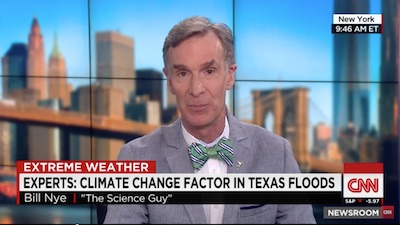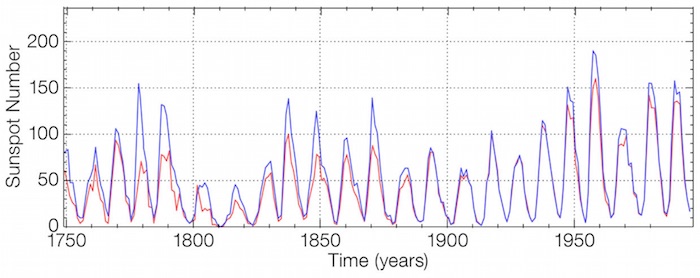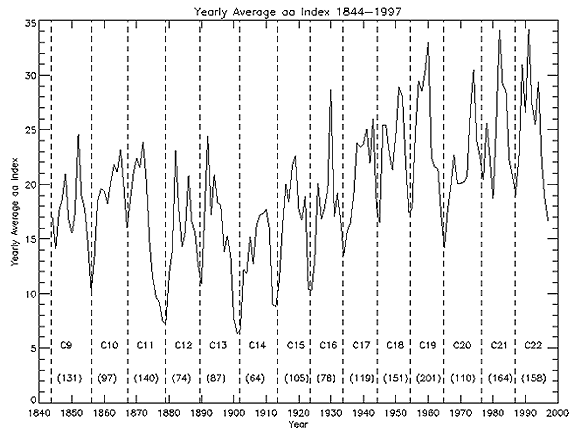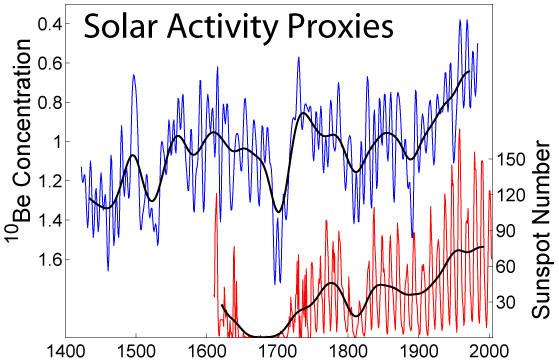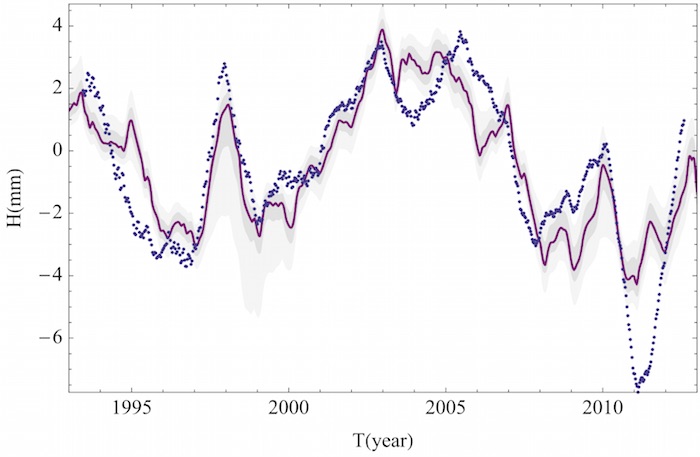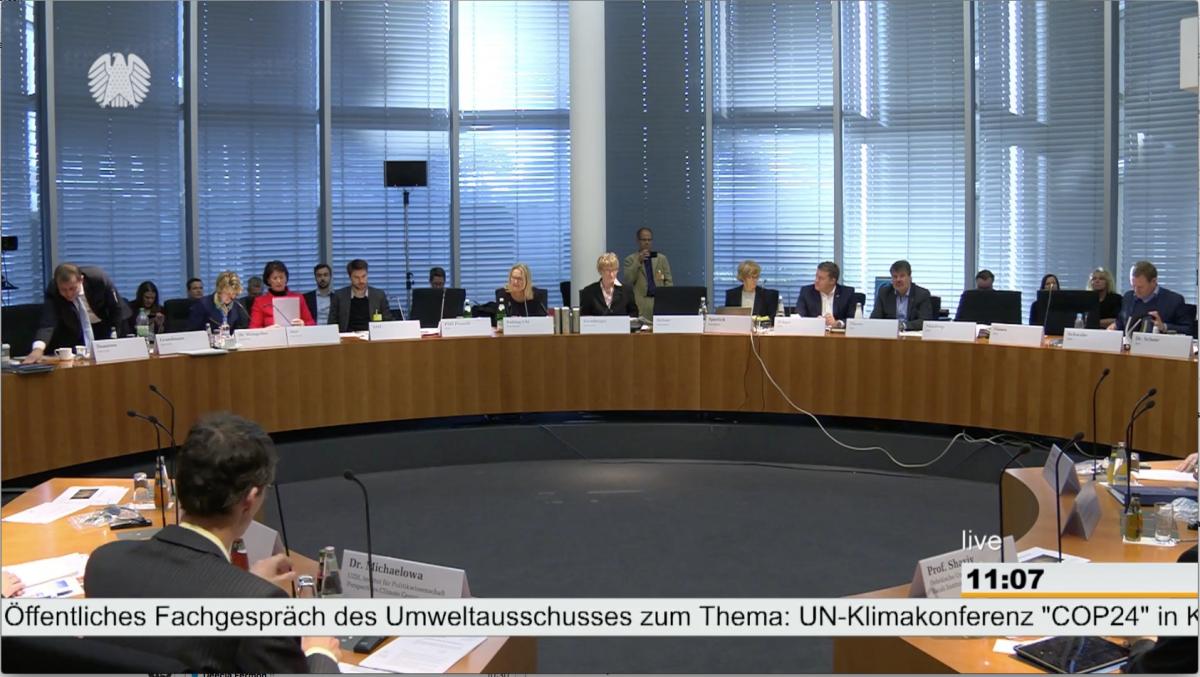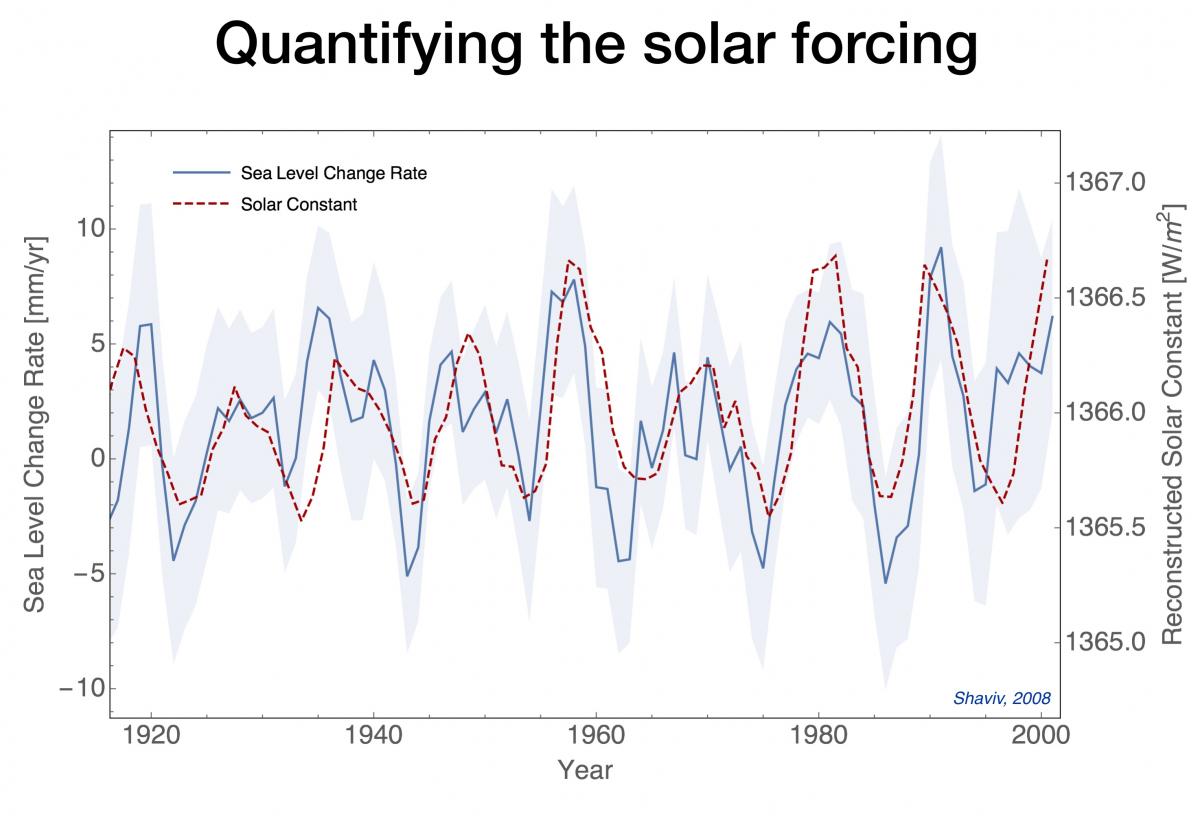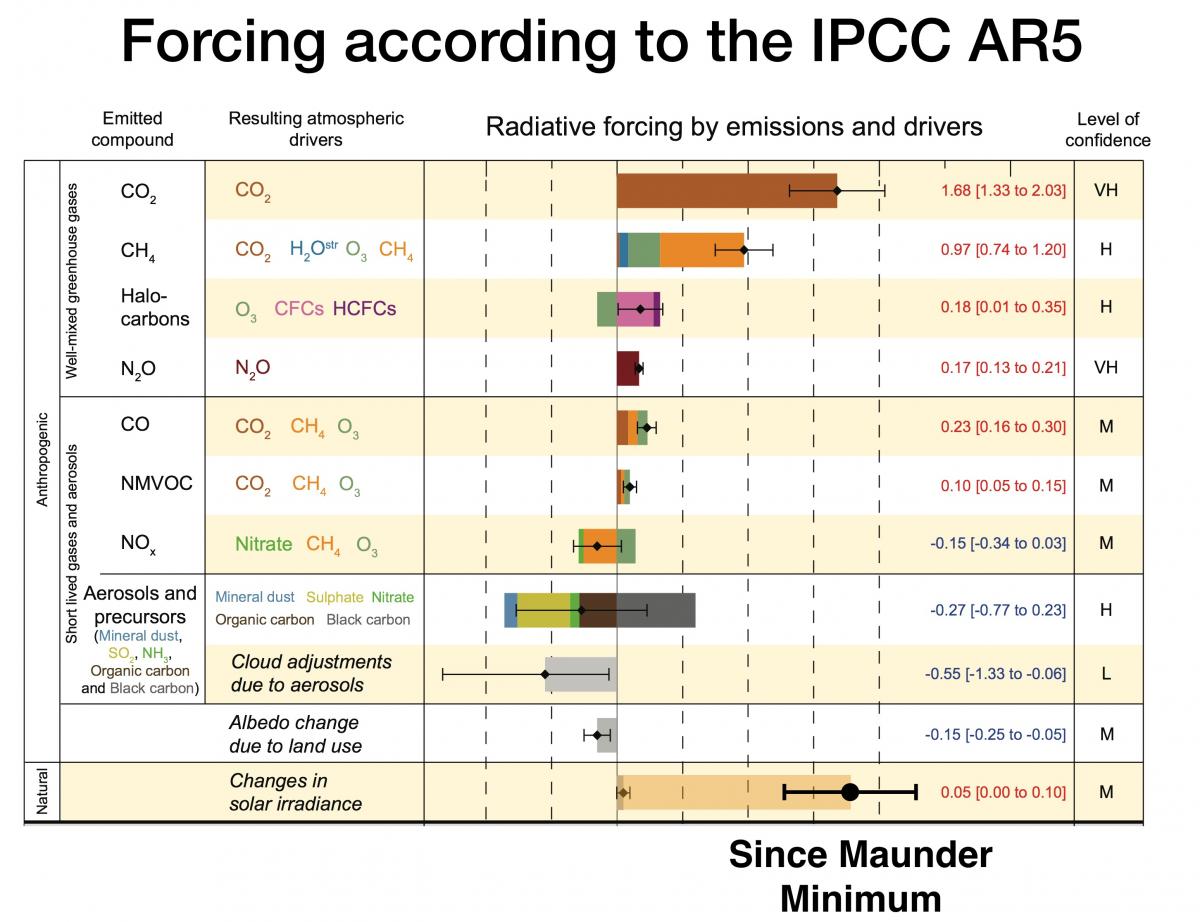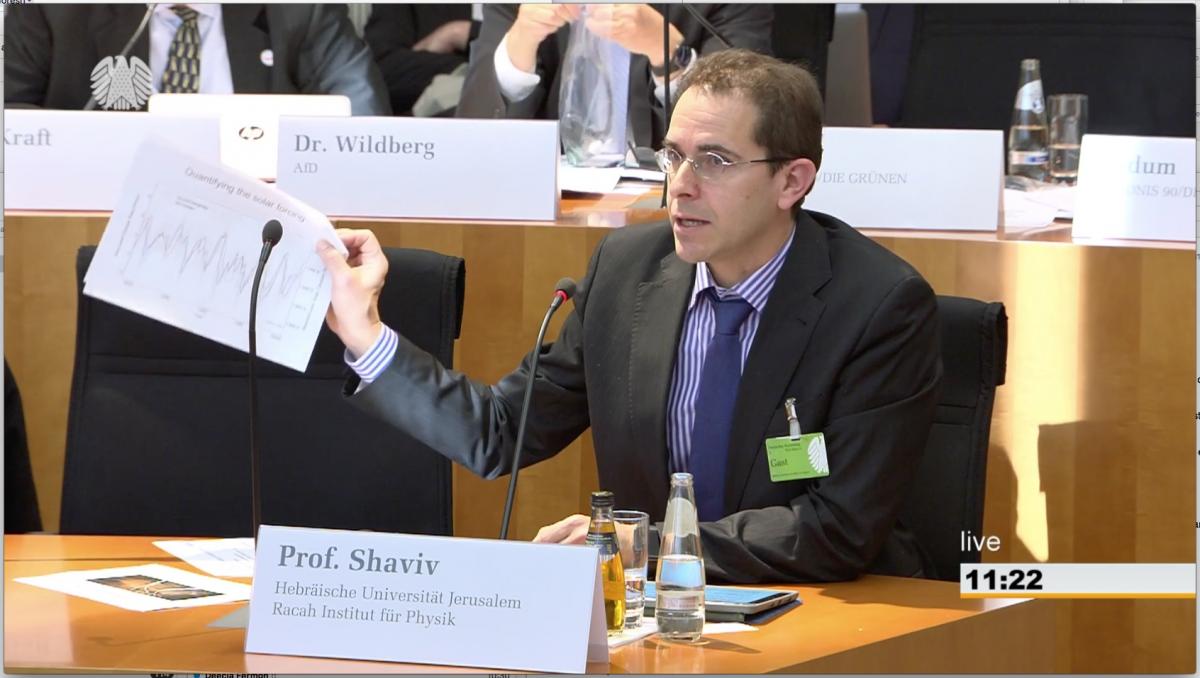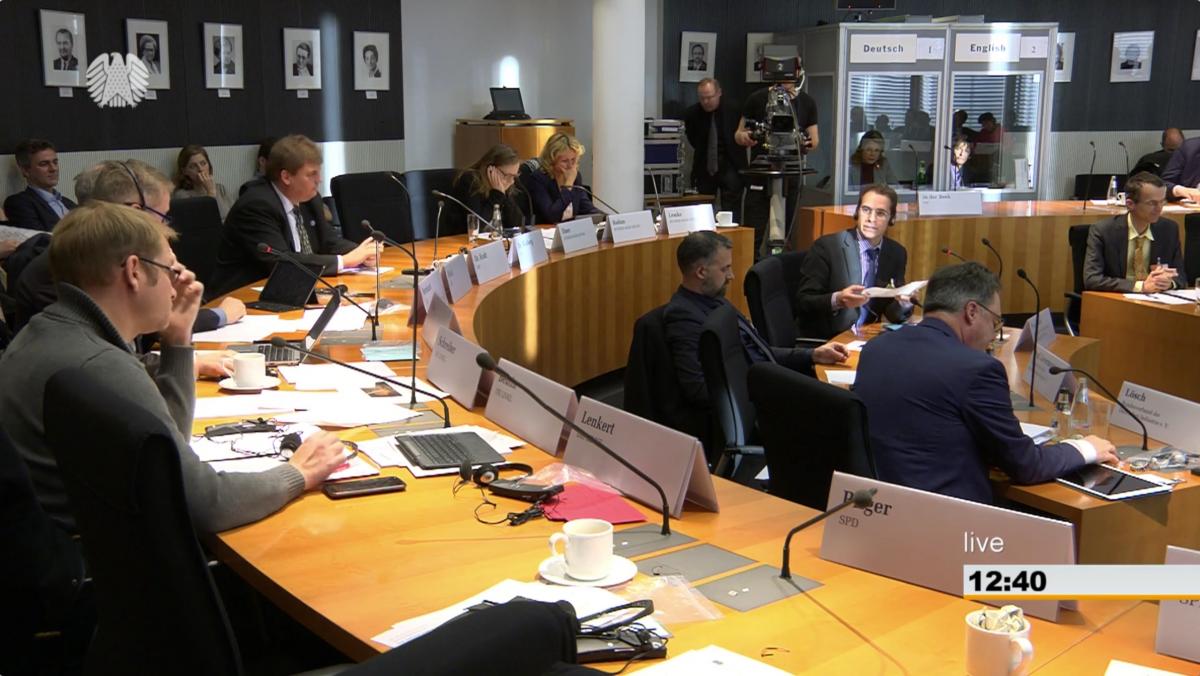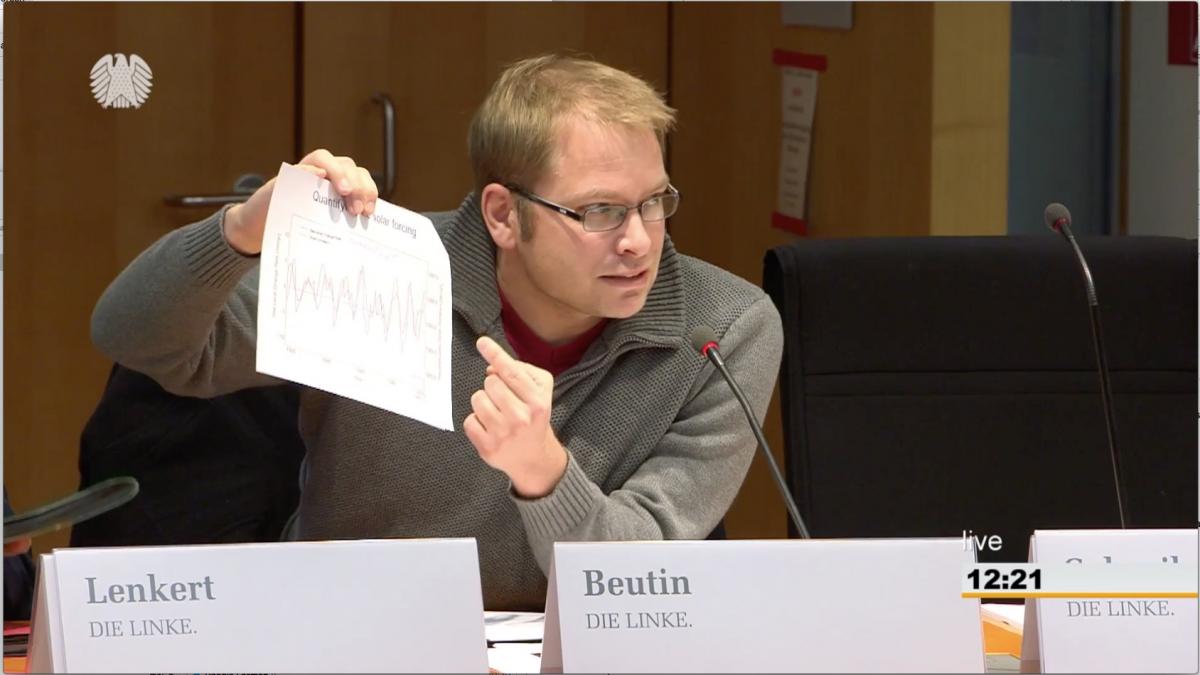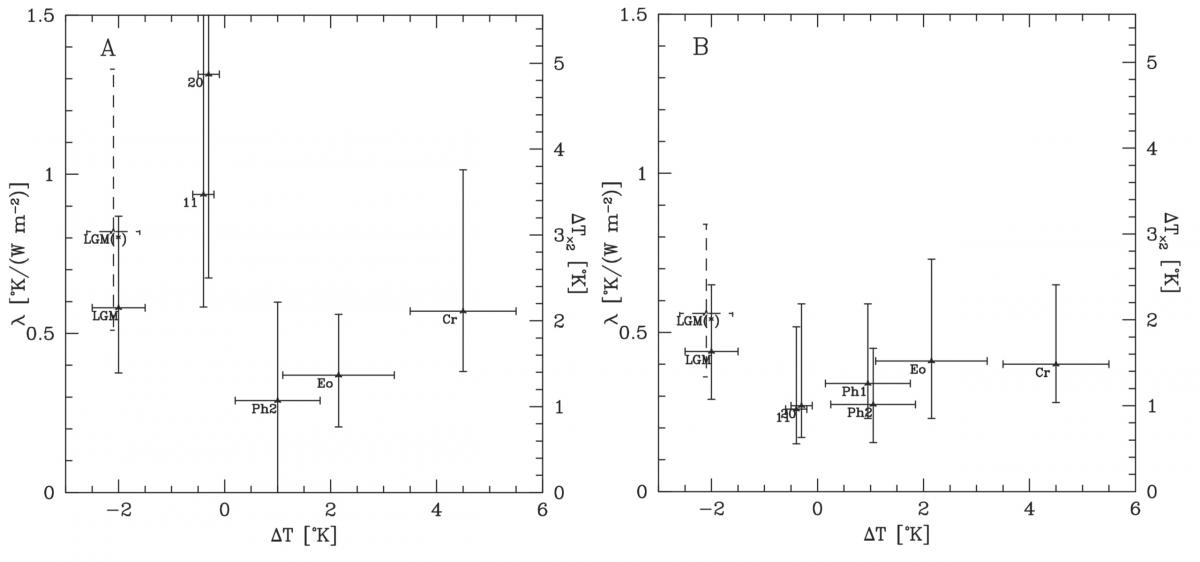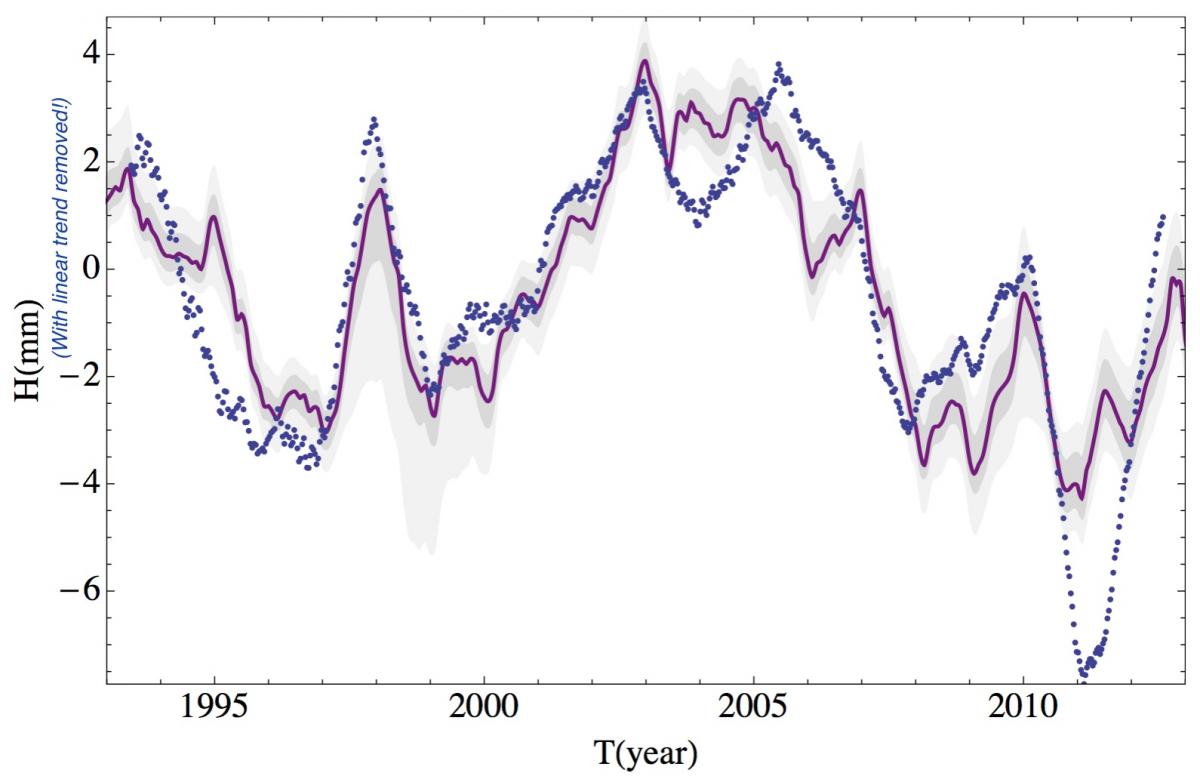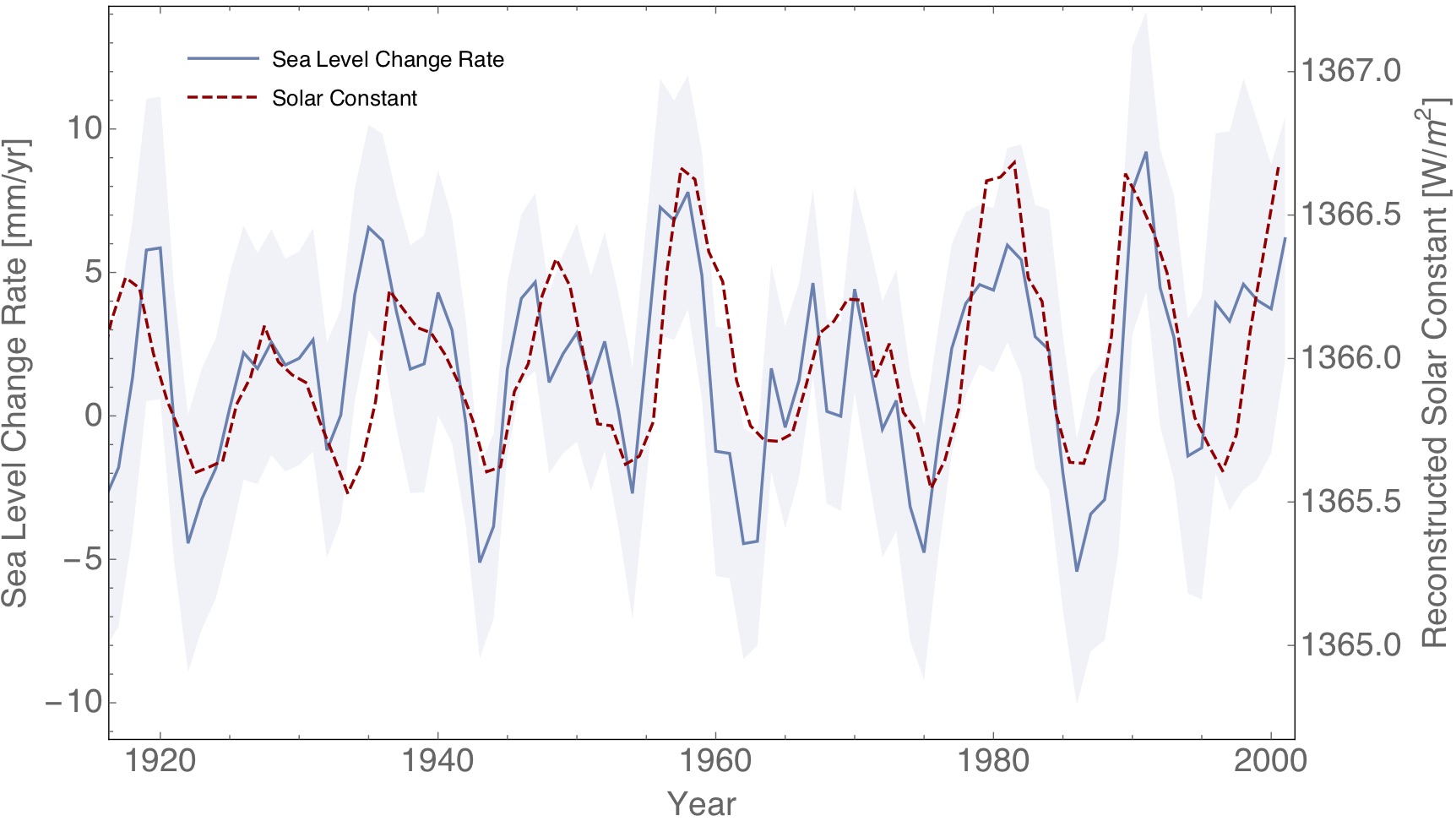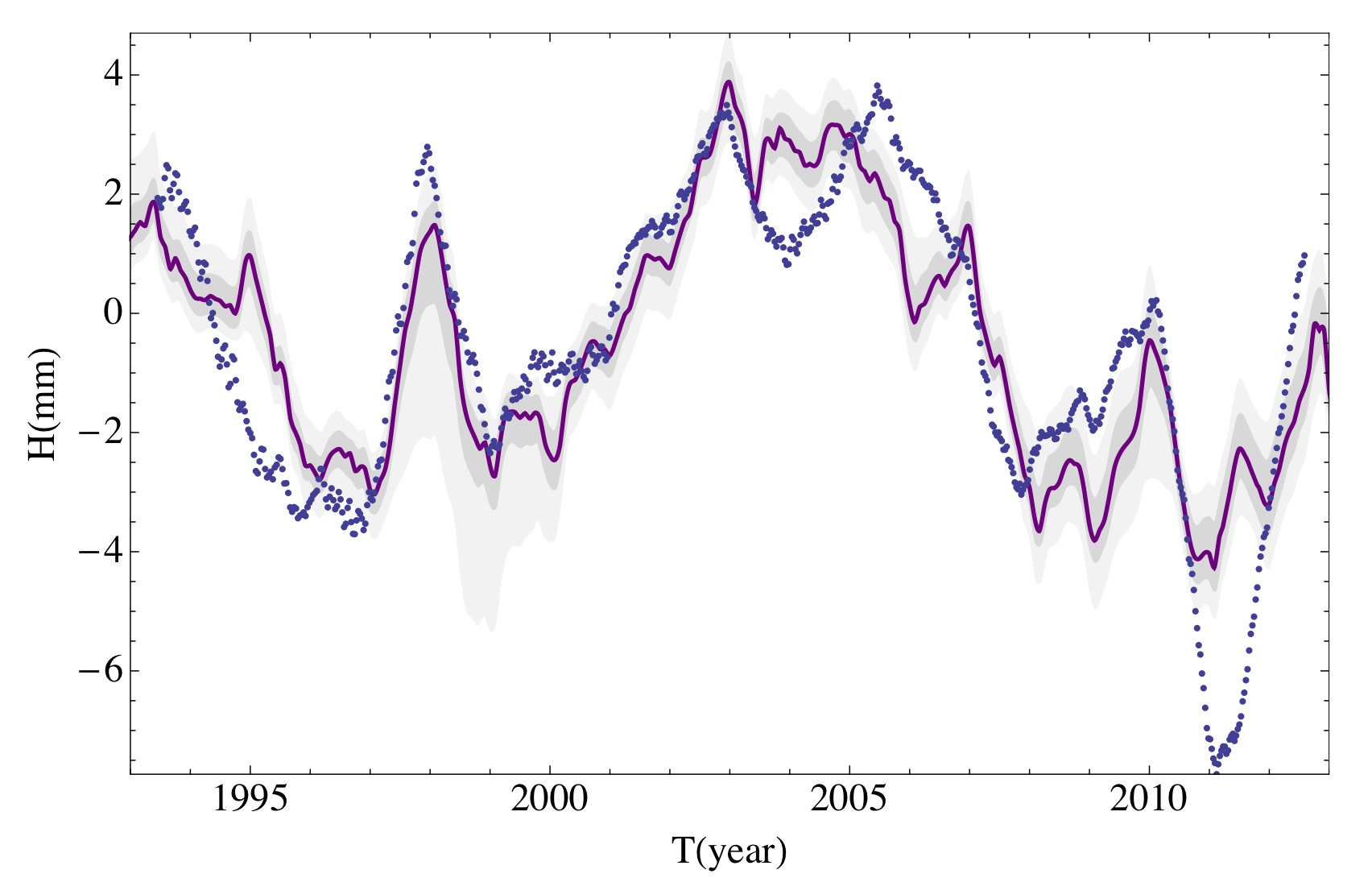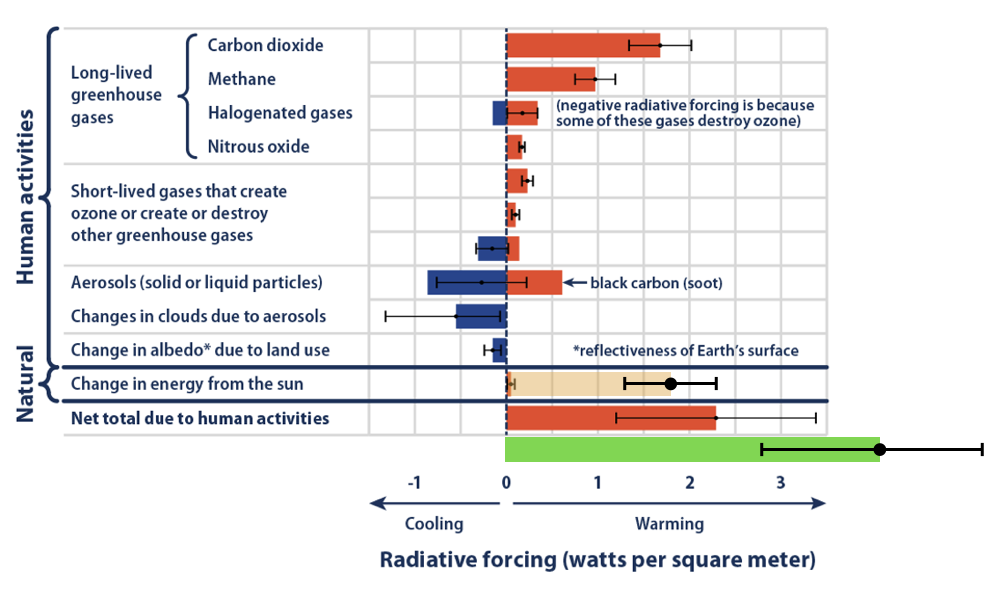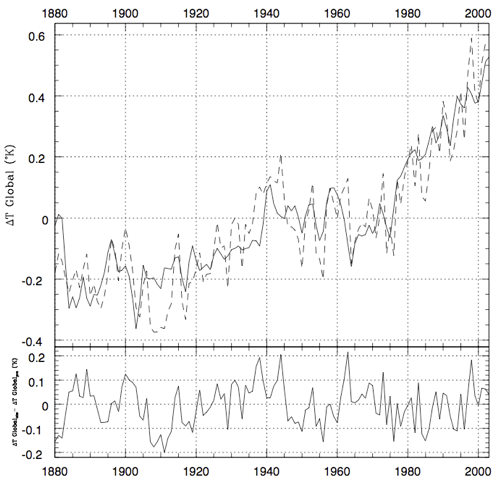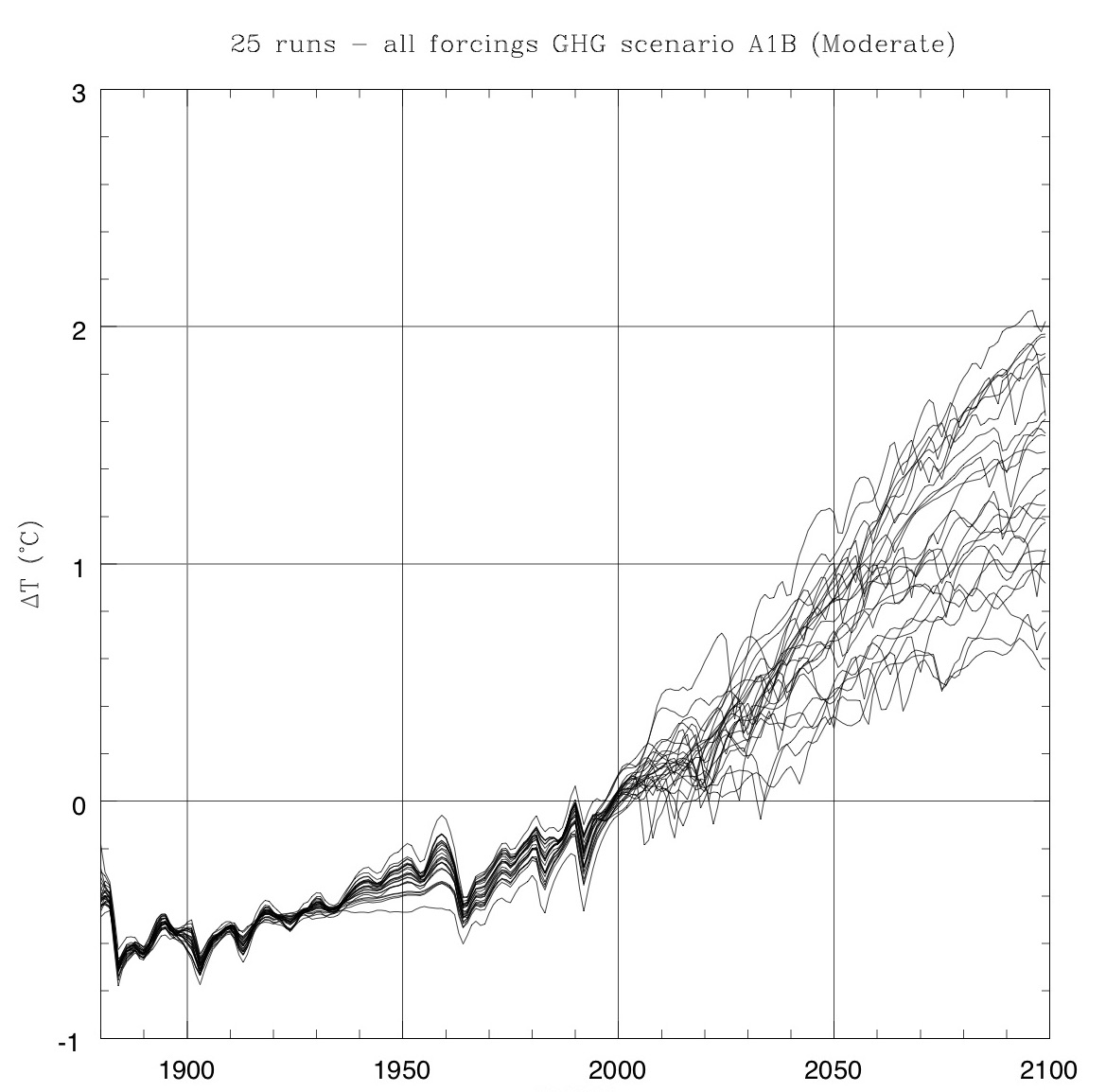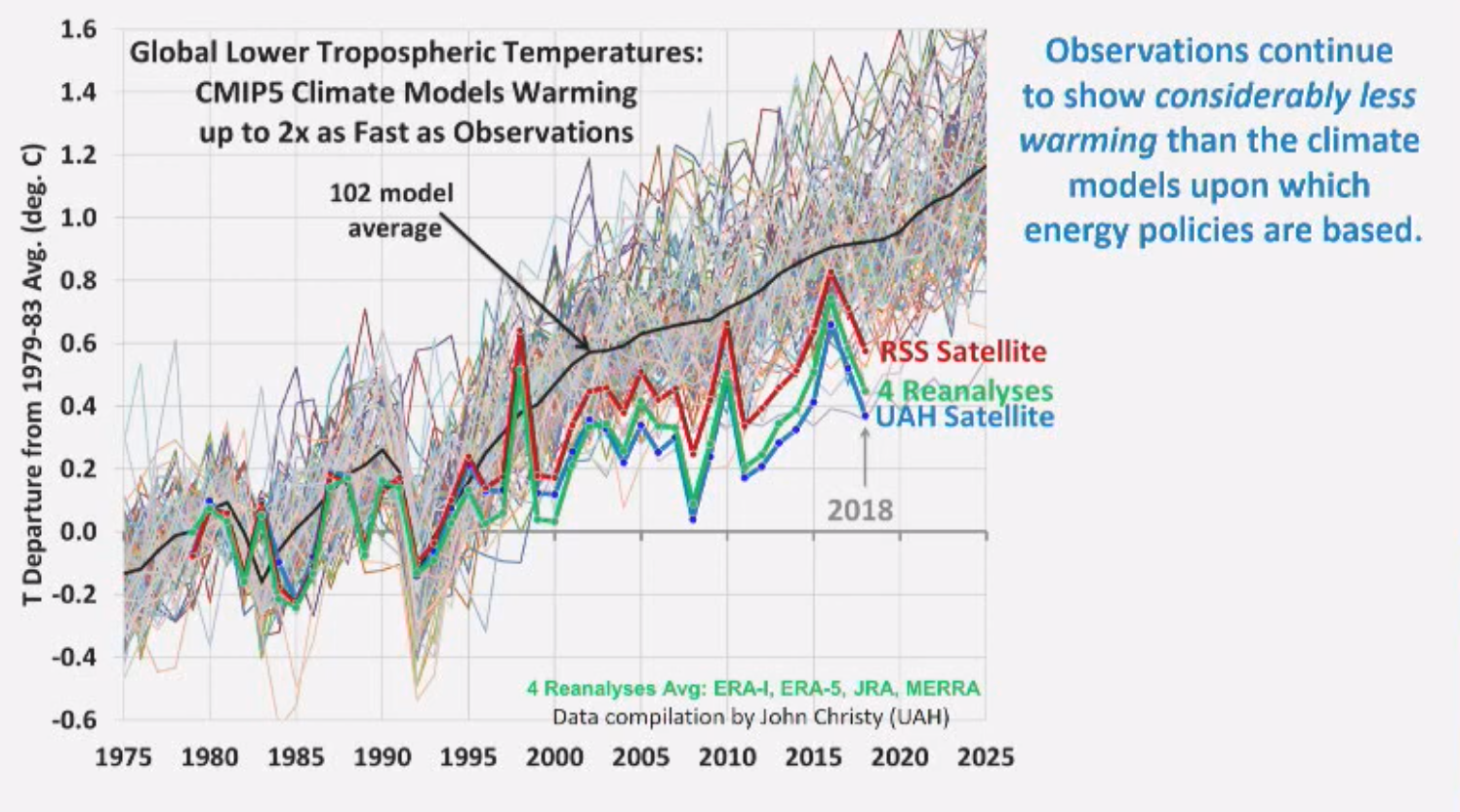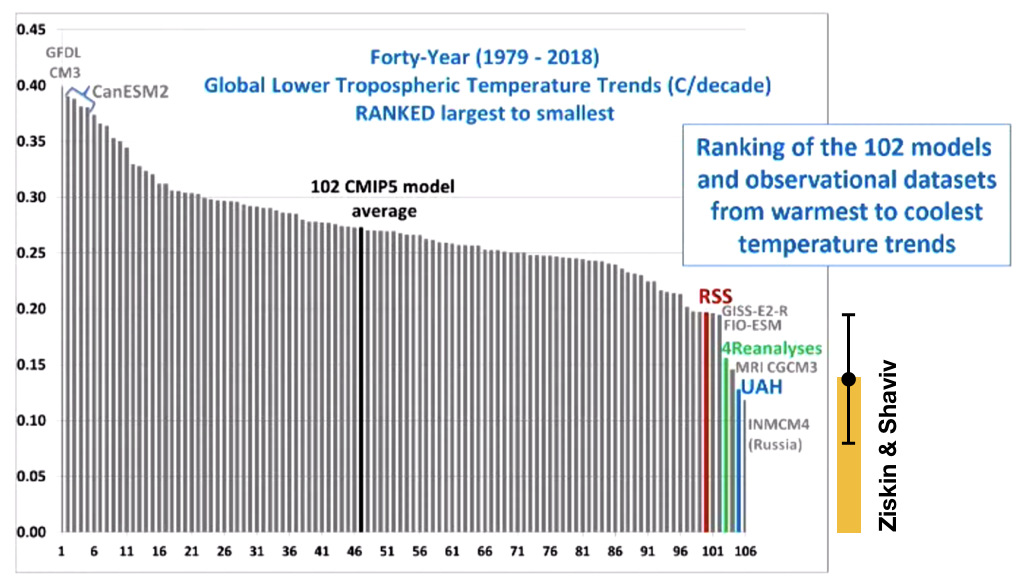Last week I had the opportunity to talk in front of the Environment committee of the German Bundestag. It was quite an interesting experience, and frankly, something I would have considered unlikely before receiving the invitation. It was in fact the first time a climate "skeptic" like myself appeared behind those doors in many years.
As I understand, the committee was used to inviting Prof. Schellnhuber, formerly the director of the Potsdam Institute for Climate Impact Research. However, as he recently retired, there were voices that the committee should freshen up and invite someone else, and the name that came up was that of Prof. Anders Levermann, also from the same PIK. That however triggered some of the parties to request other people as well, and the committee ended up inviting 6 specialists. Two were bona fide scientists (including myself and Levermann) while the four other were experts on other topics. My name popped up by the right wing AfD party who's climate agenda is consistent with my climate findings—that global warming is a highly exaggerated scare.
The earliest flight from Israel that day would have brought me to the Bundestag awfully close to the beginning of the discussion. So I flew in the day before. I landed in a freezing cold Berlin (-3°C) but sunny! Actually exhilarating weather I quite like.
![]()
The next day I showed up at the committee. I was interviewed by someone form a local news outlet that I was told has the tendency to distort the interviews with people like myself (if anyone knows about it, I'm curious, so leave a comment about it if you have seen it).
As I entered the committee room and sat down, Levermann past by and told me in hebrew, אתה יודע שאתה טועה (You know that you're wrong). Which of course caught me in a bit of surprise. It turns out that Levermann did his PhD with Prof. Itamar Procaccia at the Weizmann institute, a world expert in turbulence, nonlinear phenomena and statistical mechanics. Anyway, my German can be described as somewhere between nonexistent and really awful (I studied for a year when I was in high school in the US but forgot most), but enough to say, Ich glaube ich bin recht (I believe I am right).
![]()
The discussion started with each one of the experts allowed to talk for 3 minutes. It is actually quite a problem. People have been brain washed to think about global warming as mostly anthropogenic and almost unavoidably catastrophic. How do you prove to people that they are all wrong (or more precisely, that they were told highly exaggerated tales) in such a short time? To make things worse, I was told at the last minute that their TV is broken. Thus, the powerpoint slides I prepared were actually printed out and given to the committee members.
Given that, I had I think no choice but to concentrate on what I think is the biggest error you find in the IPCC, and which clearly overturns the standard polemic, and that is that the sun has a large effect on climate.
Here is what I prepared (what I said was pretty close but not all verbatim):
Three minutes is not a lot of time, so let me be brief. I’ll start with something that might shock you. There is no evidence that CO2 has a large effect on climate. The two arguments used by the IPCC to so called “prove” that humans are the main cause of global warming, and which implies that climate sensitivity is high, are that: a) 20th century warming is unprecedented, and b) there is nothing else to explain the warming.
These arguments are faulty. Why you ask?
We know from the climate-gate e-mails that the hockey stick was an example of shady science. The medieval warm period and little ice ages were in fact global and real. And, although the IPCC will not admit so, we know that the sun has a large effect on climate, and on the 20th century warming in particular.
![]()
In the first slide we see one of the most important graphs that the IPCC is simply ignoring. Published already in 2008, you can see a very clear correlation between sea level change rate from tide gauges, and solar activity. This proves beyond any doubt that the sun has a large effect on climate. But it is ignored.
To see what it implies, we should look at figure 2.
![]()
This is the contribution to the radiative forcing from different components, as summarized in the IPCC AR5. As you can see, it is claimed that the solar contribution is minute (tiny gray bar). In reality, we can use the oceans to quantify the solar forcing, and see that it was probably larger than the CO2 contribution (large light brown bar).
Any attempt to explain the 20th century warming should therefore include this large forcing. When doing so, one finds that the sun contributed more than half of the warming, and climate has to be relatively insensitive. How much? Only 1 to 1.5°C per CO2 doubling, as opposed to the IPCC range of 1.5 to 4.5. This implies that without doing anything special, future warming will be around another 1 degree over the 21st century, meeting the Copenhagen and Paris goals.
The fact that the temperature over the past 20 years has risen significantly less than IPCC models, should raise a red flag that something is wrong with the standard picture.
I should also add that science is not a democracy. The majority is not necessarily right! You should also be careful and make the distinction between evidence for warming and evidence for warming by humans. There is in fact no evidence for the latter. Last, people may frighten you with secondary climate effects associated with global warming, on the sea level, cryosphere, droughts floods or economic effects. However, if the underlying climate model is fundamentally wrong, all the ensuing predictions are irrelevant.
The fear of global warming, and with it the denouncement of any other voice, is now part of our Zeitgeist. However instead of blindly flowing with the flow, we should stop for a minute and think before we waste so much of our precious public resources. Maybe we will find out the that the emperor has new clothes.
![]()
When invited, I was also told that I can submit a written statement, which is what I did. It is a few times longer and has a bit more information. You can find it on the Bundestag's website, with a German translation.
Then came the questions, which were mostly guiding questions - each party asked the expert close to its heart to basically continue saying whatever they wanted to hear. One of the questions I was asked was about the determination of the global temperature, but frankly I didn't understand it. I should add that I had to rely on simultaneous translatation (there were two translators brought in especially for me, I think), and the translated question I heard in English sounded like somethig a bit convoluted and hard to address.
Anyway, during the whole discussion I was directly criticized by Levermann and by Lorenz Beutin, MdB (Bundestag member from Die Linke - the "The Left").
![]()
The first such critique was prompted by a request to Levermann, to address why I was wrong in my speech. I should say that Levermann seems nice at the personal level. I have nothing against him, but I his response at this round was totally unscientific. He said that everything I said is rubbish (at least that was the English translation I heard), which of course is not a scientific argument.
The second round came from Beutin. He actually raised two interesting specific points which Levermann pickup on as well, which is great, because this is what science is all about. Argue about specific scientific facts and the conclusions that can be drawn from them.
![]()
So what were the points that were raised by Beutin and Levermann?
1) The average sea level change rate (in the solar / sea level change rate graph) is above zero, proving that there was long term sea level rise.
2) From about 1990, solar activity has decreased but the temperature increased. So the sun cannot cause the warming.
3) It is all just correlations (and therefore proving nothing).
Why are these arguments either irrelevant or wrong?
![]()
1) Indeed as Beutin noted, the average of the sea level rise is above zero. This is of course true. I should say that I am actually really happy that a politician takes notice of such a subtle point. Sea level has increased over the 20th century (because of warming, melting, and glacial rebound), but the sea level rise is not the signal I am looking at. It is an interesting consequence of the global warming. However, I am looking for the drivers of the warming, not the consequences at this point! And the fact that sea level is rising does not contradict the fact that you see the sun’s 11-year signature clearly, with which you can quantify the solar radiative forcing. Clearly then, this argument is irrelevant. The logical leap from a rising sea level to the fact that the sun is not a major climate driver is baseless.
2) Rising temperatures with falling solar activity from the 1990's. The argument here is of course that the negative correlation over this period tells us that the sun cannot be the major climate driver. This too is wrong.
First, even if the sun was the only climate driver (which I never said is the case), this anti-correlation would not have contradicted it. Following this simple logic, we could have ruled out that the sun is warming us during the day because between noon and say 2pm, when it is typically warmest, the amount of solar radiation decreases while the temperature increases. Similarly, one could rule out the sun as our source of warmth because maximum radiation is obtained in June while July and August are typically warmer. Over the period of a month or more, solar radiation decreases but the temperature increases! The reason behind this behavior is of course the finite heat capacity of the climate system. If you heat the system for a given duration, it takes time for the system to reach equilibrium. If the heating starts to decrease while the temperature is still below equilibrium, then the temperature will continue rising as the forcing starts to decrease. Interestingly, since the late 1990’s (specifically the 1997 el Niño) the temperature has been increasing at a rate much lower than predicted by the models appearing in the IPCC reports (the so called “global warming hiatus”).
Having said that, it is possible to actually model the climate system while including the heat capacity, namely diffusion of heat into and out of the oceans, and include the solar and anthropogenic forcings and find out that by introducing the the solar forcing, one can get a much better fit to the 20th century warming, in which the climate sensitivity is much smaller. (Typically 1°C per CO2 doubling compared with the IPCC's canonical range of 1.5 to 4.5°C per CO2 doubling).
You can read about it here: Ziskin, S. & Shaviv, N. J., Quantifying the role of solar radiative forcing over the 20th century, Advances in Space Research 50 (2012) 762–776
The low climate sensitivity one obtains this way is actually consistent with other empirical determinations, for example, the lack of any correlation between CO2 variations over the past half billion years and temperature variations. See in particular fig. 6 of a sensitivity analysis I published in 2005.
![]()
Fig. 6 from Shaviv (2005) in which I carried out a senisitivity analysis assuming that the sun has a large effect on climate through cosmic ray modulation (right) or that it doesn't (left). Each error bar is the 1σ sensitiviy range obtain from radiative forcing variations over different periods as a function of the average tempeature relative to today.
3) The third point raised is that the allegedly large solar climate link is just based on correlations. This is wrong as well.
To begin with, if the correlations where just spurious, then there would have been no reason for them to continue, but since the analysis that gave the above graph was published, a new one based on 2 more solar cycles worth of satellite altimetry was published as well. If the first correlation was a mere fluke, then there should be no reason for the correlation to continue, but they very clearly do. See Howard, D., Shaviv, N. J., & Svensmark, H. (2015). The Solar and Southern Oscillation Components in the Satellite Altimetry Data. Journal of Geophysical Research: Space Physics, 120, 3297-3306.
In fact, the sun + ENSO explain 71% of the variance in the linearly detrended sea level change. You could think that it doesn't get any better than that! But it does.
This correlation has the correct amplitude and phase that you would expect from (a) the low altitude cloud cover variations seen in sync with the solar cycle which were estimate to cause drive a 1W/m2 variation and with (b) the change in the sea surface temperature of 0.1°C over the solar cycle (e.g., see the above paper on climate sensitivity over different time scales where the cloud forcing and sea surface temperatures are discussed). You could again think that it doesn't get any better than that, but it does yet again! We have a mechanism to explain it all. It is through modulation of the cloud cover.
![]()
Linearly de-trended altimetry based Sea level (blue dots) and a fit which includes only the solar cycle and el Ñino (from Howard et al. 2015). One can clearly see that the solar cycle has a prominant contribution. It is in fact consistent in phase and in amplitude to the Shaviv (2008) result (local copy).
You can read more about the big picture in a summary I wrote a couple of years ago when on sabbatical at the Inistute for Advanced Studies in Princeton. So it isn't correlations. It is part of a wider consistent picture with endless empirical results and physical mechanisms to explain it.
To sum up, one cannot avoid the conclusion that the sun has a much larger effect on climate than the IPCC is willing to admit. It is not rubbish, or just correlations, nor is it inconsistent with observations on temperature or sea level.
After the committee, I was taken for a tour of the Bundestag by the nuclear physicist Dr. Götz Ruprecht, which of course includes the Reichstag building. Besides seeing interesting architecture, the most interesting thing was a discussion with Ruprecht on the Dual Fluid reactor concept that he and his colleagues are working on. It is a fast reactor that can use natural Uranium and Thorium, it can treat high-level waste (i.e., ensure there is no waste with a half life longer than a few centuries), it is inherently safe because it has such a strong negative temperature dependence of the reaction rates (as opposed for example to Graphite reactors like Chernobyl's) and because it includes passive heat based safety valves as well. Because of its high operating temperature, it can be used for additional things such as generation of hydrogen for clean fuel. And, electricity production should be less than 1 cent per kWhr (even cheaper than the typical 3 cents for present day nuclear, and compared with the 30 euro-cents per kWhr that one pays in Germany because of all the effective subsidies of ineffective alternative energy sources, or the 11 euro-cents per kWhr I pay in Israel, where there are much less of these subsidies). Of course, there is no chance that something like that will be developed in Europe with the current atmosphere in Europe and Germany in particular, where nuclear is phasing out (and soon coal... at least until the first catastrophic power outage that they will sure have). If you're a billionaire that wants to invest in a project that will lead the future energy production, contact me :-)
![]()
Another interesting thing that happened to me last week is that I lost my hearing in one ear (possibly from swimming a few days earlier, or the flights I had), and regained it after 5 days or so, quite a strange experience I'll write soon about. It included the very strange effect of diplacusis in which I heard a different pitch in each ear (up to a 1.5 semitone difference). I'll write about this strange experience in my next post.

